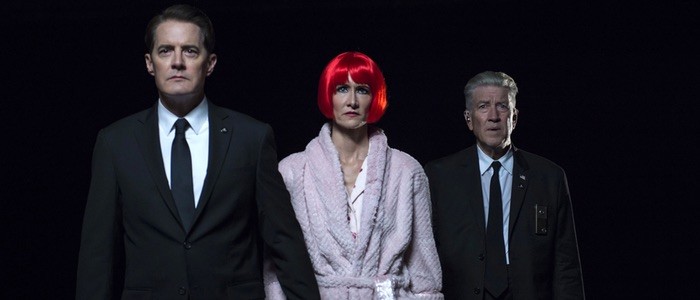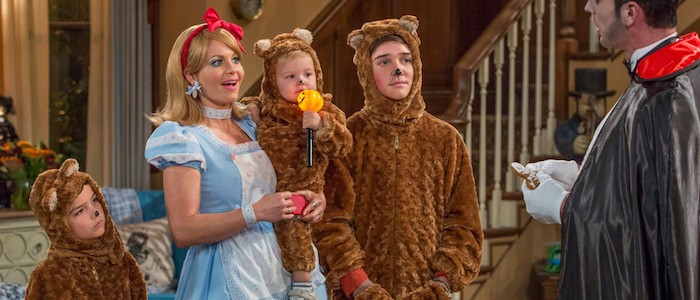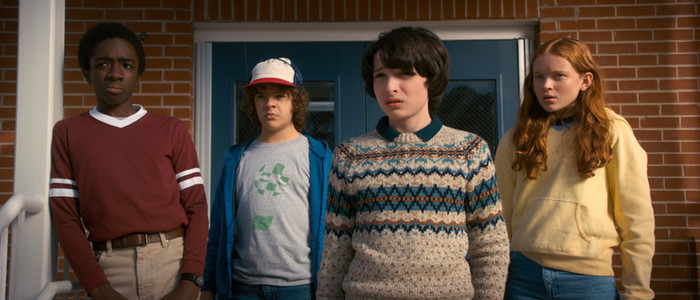This Is Why We Keep Reviving Dead TV Shows (And Why We Need To Stop)
(Welcome to The Soapbox, the space where we get personal, political, and opinionated about anything and everything. In this edition: why TV shows keep coming back from the dead and why this needs to stop.)
TV show reboots and revivals have been around for decades. Just look at Leave it to Beaver, the 1950s black-and-white sitcom that was resurrected in the '80s as — wait for it — The New Leave It to Beaver. There's The Odd Couple and The Twilight Zone; even the cartoon classic Tom and Jerry came back 74 years after its original creation.
So we can't pretend that younger generations have any kind of monopoly on the concept of a television revival. But over the last couple of years, we have seen an especially high concentration of sometimes long-dead series announcing their return, to the point that sometimes it feels like everything new is just an old story reimagined.
And sure, fans tend to welcome these reunions rabidly. How can we help ourselves? Look at Arrested Development, which according to film critic and podcast host Tom O'Keefe "probably kicked off this recent spate of revivals." Its return after a short-lived first run was hugely anticipated — but also hugely disappointing. Yet even after that fourth season, Netflix is releasing a fifth in 2018, and fans are already cautiously optimistic.
Are we gluttons for punishment, or do we just not know when to stop?
TV Show Revivals Spring from an Age-Old Tendency Toward Nostalgia
Germar Derron, pop culture editor, attributes the success of many recent TV show reboots to their indulgent nostalgia. To put things in perspective, Fuller House has reached almost as large a viewership as The Walking Dead — and Derron says that's because "Full House is the show of our childhood. It's one of the very few things we agree on [...] It plays hard to a simpler gentler time before we paid bills, or got that third DUI or divorce."
And just as TV show revivals are nothing new, neither is that craving for simpler times. For those of us who look to the '80s and '90s as those simpler times, it's hard to imagine that those generations were harking back to earlier decades in the same way. But that's exactly how The New Leave It to Beaver likely arose: it stemmed from the ever-familiar need for sentimentality.
Online Streaming Services Have Catalyzed the Revival & Reboot Resurgence
On my honor, I have never once watched an episode of Twin Peaks. But quiz me about it and you'll find that I know more about the intricacies of its plot and characters than you might expect. I know all these details because I've been exposed to the Twin Peaks Tumblr fandom, where my peers used to endlessly theorize about the show, ship their OTPs, and recapitulate tiny details.
How did anyone my age know anything about a show that was cancelled before most of us were even born? In the days before online streaming, they might have caught reruns on cable — if the stars aligned perfectly and they managed to be around at the right time of day, flipping through the right channels, and caught up to that exact episode.
But now you can stream every episode of Twin Peaks on Netflix at your leisure. No more waiting for stars to align: if a friend recommends a show you just have to check out, you can go home and watch it right away. You can watch it as many times as you want, over and over, without having to record it and take up valuable space on your DVR.
In the same way that we have every show we could possibly want within the click of a mouse, we also have internet forums and fandoms within the same reach. Fandoms feed on themselves — they thrive on constant discussions about all the same topics, and they grow exponentially from there. So they have an easier time making their collective voice heard to demand the closure they never received, or the gluttonous return of a series that died more than a decade ago.
Producers and Networks Prefer Not to Gamble on New Content
So it's little wonder that producers and networks and all those head honchos who are actually investing their time and reputations would be tempted to tap into massive fanbases. Of course they won't want to gamble on a new, untested series with new characters and storylines when they know they have a guaranteed viewership already in existence.
Remember Fuller House: "Same house, similar shenanigans, and familiar faces," Derron says — this revival brought back a show many of us grew up on, and it's massively popular.
Yet these huge numbers measure only the captive audience, and not the rebooted show's creative merit or the integrity of the storyline. For example, even though the audience gave Fuller House a score of 74% on Rotten Tomatoes, critics agreed that it had "little to offer to anyone except the original series' most diehard fans."
We just all happened to be diehard fans when it came to Full House.
Revivals Are Just a Painful Opportunity for Once-Beloved Series to Disappoint Hungry Fans
I remember the moment I clicked "Play" on my laptop to start watching the Gilmore Girls revival last fall. I was just as eager as any superfan. I was barely old enough to watch the show during its original run, but I re-watched it dozens of times on Netflix and DVDs and, yes, even saw cable reruns every afternoon when I got home from school. But at the end of that first episode, I felt deflated.
The clever banter between Rory and Lorelai I had long ago admired now made me cringe — are they really just calling that dude fat, in front of his face? The lack of representation of dynamic characters of color or differing sexual orientations fell flat. And on and on. Critics ripped Gilmore Girls apart for its blatantly empty white feminism.
That white feminism and lack of inclusivity was around in the original series, but it's easier to contextualize as an unfortunate product of its time when we are viewing the episodes as reruns, or as part of The Past.
"We're . . . in a time where retro automatically means cool," screenwriter Sabya Clarke says, "even though, let's admit, the shows that hold some of our fondest memories just aren't up to snuff anymore. (Nor were they ever, let's be brutally honest for half a second)."
To exacerbate its white feminism problem, Gilmore Girls: A Year in the Life didn't exactly deliver on the closure promised to so many fans who were discontent after the seventh season. Instead, after we watched Rory flounder aimlessly (much like the storyline that was being stretched beyond its potential) and the showrunners opted for a cliffhanger ending that confused and infuriated most viewers.
We Should Look Beyond Revivals of Old, Tired Concepts
The unsatisfying Gilmore Girls reunion demonstrated countless reasons to avoid similar reboots, all the way from misplaced nostalgia to lackluster endings. Clarke suggests that "you don't need a reboot" — she argues that our nostalgia for old shows and simpler times can be captured instead in series like Stranger Things, which evoke those old moods and ideas with fresh new storylines. There is far more narrative integrity in wrapping up a story the first time than in trying to draw it out endlessly for more media attention.
"In the end, it's about respect," Clarke says. "Respect for the original story and what made it great, over what big networks think a story should be in this day and age. If you're going to box a good show into the modern definitions of exciting and interesting, just go make your own."




